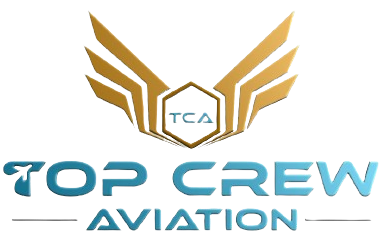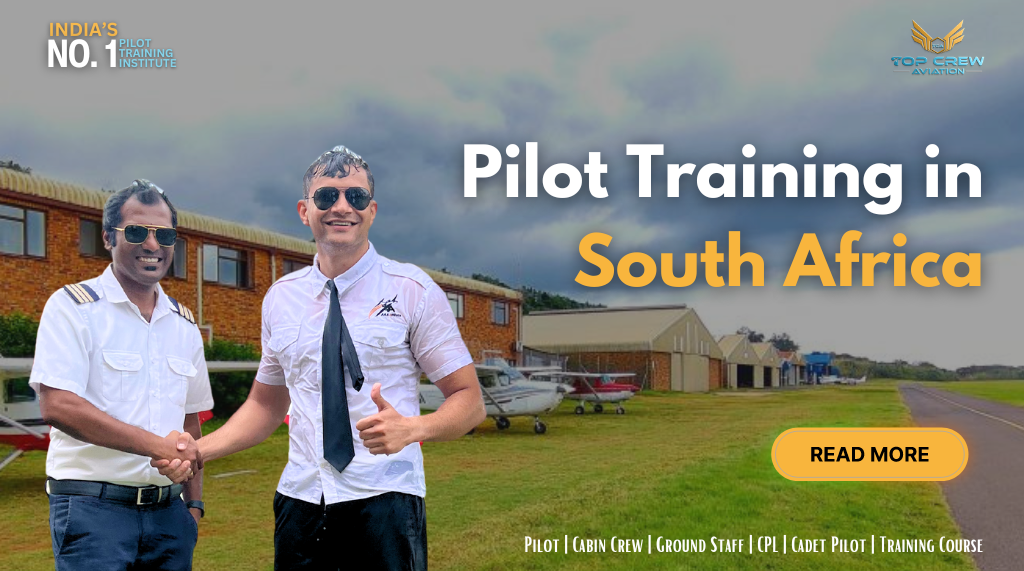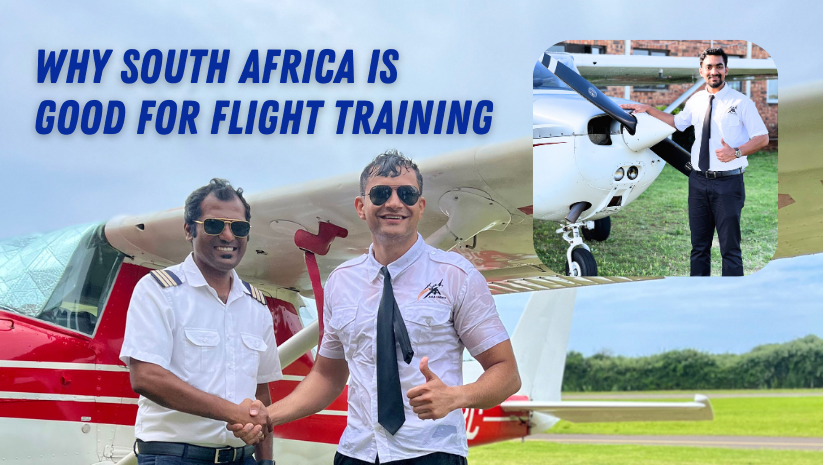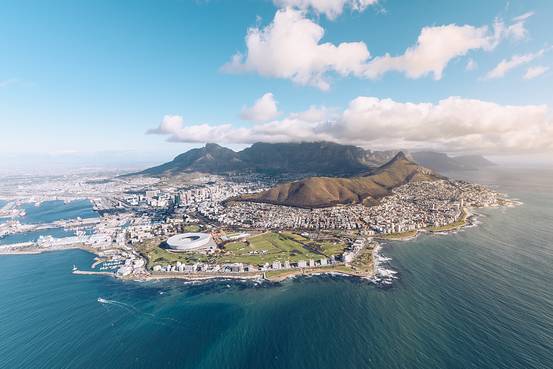Hey Future Pilots! Today we will be looking at Pilot Training in South Africa. With many good options to pursue Pilot Training nowadays, South Africa remains a top choice for aspiring Pilots worldwide. The country provides exciting Flight Training opportunities for students from India.
Contact Us! to experience world-class training and getting your Pilot Training done in South Africa.
Table of Contents
- Why South Africa is good for Flight Training
- Flying School in South Africa during Pilot Training
- Aircraft Fleet for Flight Training in South Africa
- Weather for flight training in South Africa
- Lifestyle during Pilot Training in South Africa
- Cost of Pilot Training in South Africa
- Additional factors to consider for Flying Training
- From where to Complete Pilot Training and Flight Training
- Frequently Asked Questions(FAQs) on Pilot Training
1.Why South Africa is Good for Flight Training :
South Africa is a prime destination for flight training, especially for Indian students seeking to become Airline Pilots –
Affordability: Flight training in South Africa costs approximately INR 35 to INR 40 Lakhs in most schools. This makes South Africa more economical compared to other countries like the USA or New Zealand.
Exposure to International and Domestic Traffic: Students get greater exposure to Air Traffic in South Africa. The students get varied experience of flying in the flight schools which are majorly located within international airports.
Instructor Opportunities: Students can work as instructors after completing their Pilot Training and opting for an Instructor Rating. This helps them gain valuable experience while furthering their own skills and flying hours.
Visa Assurance: South Africa offers a very high visa assurance for learners and educational purposes. The country has simplified the process for international students.
Easy RTR License Conversion: South African Radio Telephony License easily converts to Indian Radio Telephony Licence. South Africa being a Commonwealth Country provides the Indian student this advantage.
Favorable Weather: South Africa’s consistent weather allows for faster training completion and enjoyable learning experiences. Experiencing on average 239 dry days.
World-class Training: Despite low costs, training quality remains high, as South Africa has a well-developed General Aviation Industry.
Cultural Experience: Students can immerse themselves in South African culture while receiving comprehensive training.
ICAO Recognition: ICAO has given recognition to the training by SACA i.e South African Civil Aviation Authority to give commercial pilot licenses. This makes easy for South African pilots to convert their CPLs to Indian CPLs.
Comprehensive Program: Many Flying Schools in South Africa have programs that include DGCA exams, ensuring thorough preparation for aspiring pilots.
2. Flying School in South Africa during Pilot Training :
South Africa has several reputable flying schools across the country. South Africa is popular and renowned for the same reason in aviation circles. Most of the Flying Schools are based out of an International Airport or a Regional Airfield. The Flight schools have large fleets of Aircraft in South Africa for Flight Training. Here are a few well-known flying schools in South Africa for Pilot Training –
| Flying School | Location | Courses Offered |
| AAA4 Pilots | Durban | Private Pilot License, Commercial Pilot License, Airline Transport Pilot License |
| 43 Air School | Port Alfred | Private Pilot License, Commercial Pilot License, Airline Transport Pilot License |
| Blue Chip Flight School | Midrand | Private Pilot License, Commercial Pilot License, Flight Instructor Ratings |
| Rand Airport FTC | Germiston | Private Pilot License, Commercial Pilot License, Instrument Ratings |
| Aeronav Academy | Lanseria | Private Pilot License, Commercial Pilot License, Instrument Ratings |
| Progress Flight Academy | Durban | Private Pilot License, Commercial Pilot License, Flight Instructor Ratings |
| Stellenbosch Flying Club | Stellenbosch | Private Pilot License, Advanced Ratings |
Indian students do there flight training from flying schools in South Africa. Reason being the South African schools know the DGCA regulations very well. The flight schools usually offer a bundled package which includes Flight Training Fees, Accommodation, and Transportation.
Fight Training: South Africa vs India
Flight Training in South Africa can take 8-10 Months to complete. The time duration will be dependent on the fleet Size of the Flying School, Weather, and Individual Ability. Candidates complete flight training take 18 Months or more in India due to Weather and smaller Fleet Sizes. Thus, candidates trying to do flight Training in shorter span of time, must opt for Flight Training in South Africa.
The candidate has the opportunity to maximize exposure to Air Traffic, as South Africa has a well developed aviation industry. This air Traffic will be of all kinds like International, Domestic, Cargo, Charter, Emergency, etc. This experience will carry over when you start working as an Airline Pilot in India and will help you immensely.
Students can either opt for Shared or Private Accommodation based on their comfort and finances. This is made possible due to the presence of boarding facilities in many Flying Schools. Proximity to Living Necessities such as a Grocery Store or Hypermarket might be an important point to consider.
If you need assistance in finding the perfect Flying School in South Africa to meet your requirements, Contact Us!
3. Aircraft Fleet for Flight Training in South Africa:
Flying Clubs in South Africa vary in size. What they offer is having different numbers of Planes and different Fleet Makeup. Some clubs have 5 to 10 planes, mostly for basic flying lessons. These places often teach people how to fly for fun or to get a Private Pilot License(PPL). Some bigger Flying Schools that deal with many students, International Students, and Commercial Pilot Licenses (CPL) have double-digit Fleet sizes.
You can expect Fleets of Flying Schools in South Africa to consist of –
- Cessna 152
- Cessna 172
- Tecnam P2006
- Tecnam P2008
- Beechcraft King Air Series
- Cessna 300/400 Series
- Diamond DA42 Twin Star
- Piper Seneca Series
- Pilatus PC-12 (twin-engine variant)
The flight schools use Cessna 152 and Cessna 172 for Flight Training. These aircrafts are used for both Private Pilot licenses and Commercial Pilot licenses. Do note these planes in most cases use steam gauges. To ensure training in a modern cockpit environment one needs to ensure that Planes are fitted with Glass Cockpits.
4. Weather for Flight Training in South Africa :
Flying in South Africa changes with where you are and the time of year. The country’s nice weather, different lands, and changing weather make flying interesting. Near the sea, like in Cape Town, it can be cool and windy. While places far from the sea are often hotter. In summer, afternoon storms are common, which can change flight plans. In winter, the sky is usually clear but it’s colder, especially away from the coast. Fog, mainly near the sea and in the lowlands, can make it hard to see, affecting flights occasionally.
Pilots need to learn to keep an eye on the weather and remain vigilant. He needs to be vigilant more so in the hills where weather can shift fast. South Africa is usually good for flying, but pilots have to be careful and ready for the different weather. Knowing and getting ready for South Africa’s many weather types is key for safe and good flights across the country. The weather in the country is usually good all year round. This type of weather makes it easy to plan and carry out flight training and operations regularly.
5. Lifestyle during Pilot Training in South Africa:
A student pilot in South Africa can expect their Training Days to be filled with excitement and responsibility. Each day, they wake up early to prepare for their training flights. They spend hours studying Aviation Theories and Regulations and also grasp the complexities of flying. Their schedule is packed with ground school sessions where they learn about different subjects. This includes Air Navigation, and weather patterns using Meteorology, and Aircraft Systems.
When they’re not studying theory, they’re in the Cockpit, practicing Takeoffs, landings, and maneuvers under the guidance of experienced instructors.
Outside of training, Student Pilots doing their Pilot Training in South Africa have the opportunity to socialize with their colleagues. They can then share Experiences and Knowledge. They also make time for relaxation and self-care, going on Trips and exploring the Diverse Culture of the “Rainbow Nation”. It is a Golden Opportunity to broaden your horizons and relax. Despite the challenges, remaining dedicated to their dream of earning their Commercial Pilot License is important. They know that each lesson and flight brings them closer to achieving their goals.
The Lifestyle of a Student Pilot in South Africa is one of learning, growth, and adventure. They navigate the skies and pursue their passion for aviation.
6. Cost of Pilot Training in South Africa :
Most Flying Schools in South Africa offer Flight Training in a bundled package. The package is meant to take a person with zero aviation experience to a Commercial Pilot License(CPL) Holder. Flying Schools offers a comprehensive program that takes individuals from a Private Pilot Licence (PPL) to a Commercial Pilot Licence. This includes the subject of Instrument Rating (IR). Let’s break down the costs –
- Private Pilot Licence: The journey begins with a PPL conversion, assuming prior basic training by obtaining a Student Pilot Licence. This stage involves around 60 hours of flight time, ground school, exams, and necessary equipment, totaling approximately R200,000
- Night Rating: Expanding flying capabilities to include nighttime operations requires an additional amount. The amount is estimated R35,000 to R40,000 for specialized training and testing.
- Hour Building: Reaching the required 200 flight hours for the Commercial Pilot License involves further training. This includes primarily solo flying, at a cost of about approx. R250,000 to R285,000.
- Instrument Rating & Multi-Engine Preparation: This crucial phase, involving simulator training, multi-engine aircraft experience, and theoretical knowledge. The same comes at a cost of approx. R165,000.
- CPL Multi-Engine IF Skills Test: The final hurdle involves demonstrating proficiency in a multi-engine aircraft. This includes demonstrating flying with instrument flight, requiring an additional approx. R35,000.
7. Additional Factors to Consider for Flying Training
- Ground School: While optional, CPL ground school courses for theoretical knowledge, adding around approx. R14,600 to the total cost.
- Accommodation and Transport: Living expenses must also be factored in. The same is estimated at R58,800 for 12 months of shared accommodation and transport.
- Study Materials: Student kits for both PPL and CPL, contain essential tools and learning resources. This approx. cost R5,900 and R7,550 respectively.
The Final Tally –
Adding up all the components, the estimated cost of a Commercial Pilot License with an Instrument Rating in South Africa is approximately R750,000 to R810,000. This includes accommodation.
| Item | Cost (ZAR) | Cost (INR) |
| Private Pilot Licence | R200,000 | 867,000 INR |
| Night Rating | R35,000 – R40,000 | 151,725 – 173,400 INR |
| Hour Building | R250,000 – R285,000 | 1,083,750 – 1,235,775 INR |
| Instrument Rating & Multi-Engine Preparation | R165,000 | 715,275 INR |
| CPL Multi-Engine IF Skills Test | R35,000 | 151,725 INR |
| Ground School (Optional) | R14,600 | 63,000 INR |
| Accommodation and Transport | R58,800 | 254,800 INR |
| PPL Student Kit | R5,900 | 25,575 INR |
| CPL Student Kit | R7,550 | 32,710 INR |
| Total (excluding optional ground school) | R757,850 – R812,350 | 3,285,750 – 3,523,730 INR |
While the financial investment in Pilot Training is significant. It is a very big sum for many but the rewards of a career in Aviation make it worthwhile. By carefully planning, showing dedication, and passion for flight, Aspiring Aviators can complete their Pilot Training in South Africa!
8. From where to Start Pilot Training and Flight Training :
We have received this same question daily on our YouTube channel and our WhatsApp groups for a while now. At Top Crew Aviation have 16 years of experience in the aviation field. We have helped and guided 7500+ students. Therefore we have a vast network of connections with Flying Schools in India, South Africa, and the USA.
The process of getting your Flight Training done from South Africa can seem daunting and difficult. Especially for someone who is new to the field of Aviation this seems quite a challenge. But our experts at Top Crew Aviation aim to make this process easier and Accessible to All. Everything from Flying School Application, Visa Process Help, Conversion Flying, and even Lifetime Career Guidance will be provided!
If you are interested in Becoming a Pilot and Completing your Flight Training from South Africa, or just have Questions, Contact Us!
Read more Blog:- How Many Hours of Flight Duty Period of Pilot In India? FDTL Explained
Frequently Asked Questions(FAQs) :
Question: Why is South Africa a popular choice for flight training, particularly for Indian students?
Answer: South Africa offers affordable training, exposure to a variety of air traffic scenarios. The country has a great weather for flying, along with simplified visa processes for international students.
Question: What types of courses are typically offered by flying schools in South Africa?
Answer: Flying schools in South Africa offer courses ranging from Private Pilot License (PPL) to Commercial Pilot License (CPL). This is along with instrument ratings and flight instructor ratings. DGCA-specialised Programs are also included.
Question: How long does pilot training usually take in South Africa compared to India?
Answer: Pilot training in South Africa typically takes 12-15 months to complete. This is much shorter compared to India’s average of 18 months or more. This is due to favorable weather conditions and larger fleet sizes.
Question: What factors contribute to the favorable weather conditions for flight training in South Africa?
Answer: South Africa’s consistent weather, with an average of 239 dry days, allows for faster training completion. The candidates have enjoyable learning experiences, contributing to its reputation as a prime destination for flight training.
Question: What is the typical lifestyle during pilot training in South Africa?
Answer: Student pilots in South Africa balance their training with studying aviation theories, practical flying sessions, and socializing with colleagues. They also have opportunities to explore the diverse culture of the country during their downtime.
Question: How much does pilot training in South Africa cost, and what are the components of this cost?
Answer: Pilot training in South Africa typically costs approximately R750,000 to R810,000, including accommodation. This cost includes various components such as flight training fees, accommodation, transportation, study materials, and additional factors like ground school.
Question: How can aspiring pilots from South Africa get assistance with the flight training process?
Answer: Aspiring pilots can seek guidance and assistance from aviation experts at organizations like Top Crew Aviation. The academy provides support with flying school applications, visa processes, conversion flying, and lifetime career guidance.



